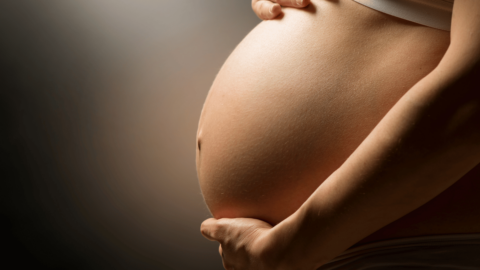Pregnancy is a time of excitement, change, and, for many, worry. If you’re managing opioid use disorder (OUD), you may feel overwhelmed—wondering if Suboxone is safe, how it might affect your baby, and what to expect during and after pregnancy. You’re not alone, and most importantly, you have options.
The truth is, staying on treatment is often the safest choice for both you and your baby. Quitting opioids suddenly can lead to dangerous withdrawal symptoms, increasing the risk of preterm labor and miscarriage. Suboxone helps stabilize you, reduce cravings, and improve your chances of a healthy pregnancy and recovery.
So, how do you navigate pregnancy, birth, and postpartum recovery while taking Suboxone?
Let’s break it down—what to expect, how to stay healthy, and tips for caring for yourself and your baby.
Can You Stay on Suboxone During Pregnancy?
Yes, you can stay on Suboxone during pregnancy, and in many cases, it’s the safest and most effective option for managing opioid use disorder.
- The American College of Obstetricians and Gynecologists (ACOG) and Substance Abuse and Mental Health Services Administration (SAMHSA) recommend buprenorphine-based treatments (like Suboxone or Subutex) during pregnancy.
- Stopping Suboxone suddenly can cause withdrawal, which may harm your baby and lead to preterm labor.
- Continuing treatment reduces relapse risk, which is far more dangerous than staying on a stable dose of Suboxone.
Example: Imagine two different scenarios—one mother quits Suboxone cold turkey, struggles with cravings, and relapses on illicit opioids. Another mother continues Suboxone treatment, stays stable, and attends prenatal checkups. Which situation sounds safer?
For most women, staying on treatment leads to better outcomes.
Suboxone vs. Subutex: Do You Need to Switch?
Many doctors switch pregnant patients from Suboxone to Subutex (buprenorphine-only) because Subutex doesn’t contain naloxone. While naloxone is safe for adults, there needs to be more studies on its effects on pregnancy.
However, recent research suggests that staying on Suboxone is often just as safe as switching to Subutex. Some doctors no longer require a switch, but others still recommend it as a precaution.
What should you do?
- Talk to your OB-GYN and addiction specialist about what’s right for you.
- If your doctor suggests switching to Subutex, ask about the benefits and risks in your specific case.
- Never stop taking medication suddenly—it can harm both you and your baby.
What to Expect: Pregnancy While on Suboxone
Pregnancy already comes with changes—morning sickness, fatigue, cravings—and if you’re on Suboxone, you may wonder how it will affect you differently.
Common Concerns and Tips
Will Suboxone make morning sickness worse?
- Some women report that buprenorphine increases nausea, especially in early pregnancy.
- Try taking it after eating a small meal, and talk to your doctor about safe anti-nausea medications if needed.
Will my baby experience withdrawal?
- Some newborns may show signs of Neonatal Opioid Withdrawal Syndrome (NOWS), but symptoms are usually mild and treatable.
- Babies born to mothers on illicit opioids have a much higher risk of severe withdrawal.
How should I prepare for labor and delivery?
- Tell your OB-GYN and hospital staff that you’re on Suboxone—this helps them plan for your pain management.
- Traditional opioids may not work as well for pain relief after birth, so discuss alternative pain management options ahead of time.
Postpartum and Suboxone: What Comes Next?
The postpartum period is one of the hardest times for recovery. Sleep deprivation, hormonal changes, and the stress of a newborn can trigger cravings and relapse risk. Staying on Suboxone can help stabilize you while you adjust to motherhood.
Breastfeeding While on Suboxone: Is It Safe?
Yes, it’s safe to breastfeed while on Suboxone. Buprenorphine passes into breast milk in tiny amounts and is considered safe for breastfeeding mothers.
In fact, breastfeeding can:
- Help soothe your baby if they have mild withdrawal symptoms.
- Lower the risk of NOWS by gradually reducing their exposure to buprenorphine.
- Strengthen your bond and provide essential nutrients.
Tip: If you’re unsure, talk to a lactation consultant or pediatrician for guidance.
How to Take Care of Yourself in Recovery and Motherhood
Balancing recovery and motherhood isn’t easy, but having a plan makes all the difference.
Tips for Thriving as a New Mom in Recovery
- Prioritize your mental health. Postpartum depression (PPD) is common—especially for moms in recovery. Don’t hesitate to seek therapy or support groups.
- Create a strong support system. Surround yourself with understanding family, friends, or recovery groups who can help when things get tough.
- Stick to your treatment plan. Continue medication, counseling, and medical checkups to keep yourself stable.
- Be kind to yourself. You’re navigating recovery and new motherhood—it’s okay if it feels overwhelming. Take it one day at a time.
Get Support with Suboxone and Pregnancy Through QuickMD
If you’re pregnant and managing opioid use disorder, you don’t have to figure it out alone. QuickMD provides:
- Online Suboxone treatment—talk to a doctor from home.
- Same-day and weekend appointments—no waiting weeks for care.
- Affordable counseling services—support for stress, addiction, and postpartum challenges.
Starting at just $45 for 30 minutes, QuickMD’s online counseling gives you the guidance and support you need—anytime, anywhere.
Take the Next Step
Your health and recovery matter, not just for you, but for your baby, too. With the right treatment and support, you can have a healthy pregnancy, a safe delivery, and a strong recovery. Take the next step and schedule an appointment with QuickMD today.




